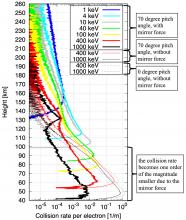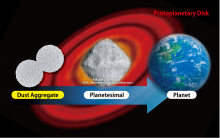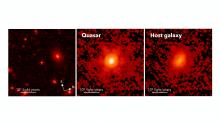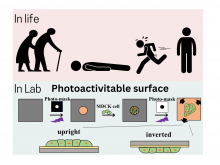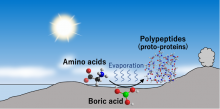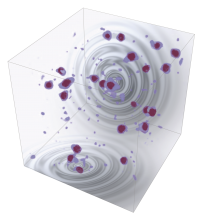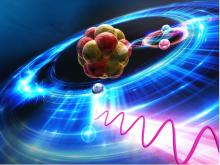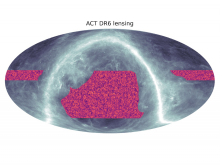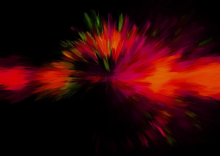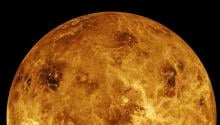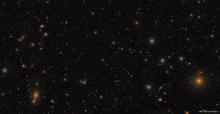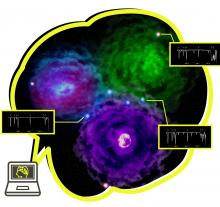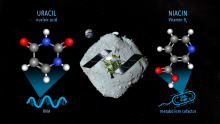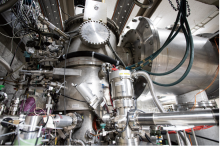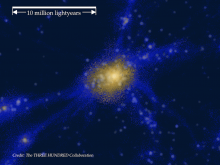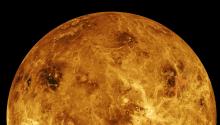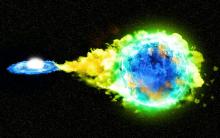Space
News
01 Sep 2023
Survey observations with the Subaru Telescope have led to the discovery of 22 quasars in the very distant universe. Their space density indicates the rapid emergence of supermassive black holes soon after the Big Bang, providing strong constraints on models of when, where, and how they formed and grew in cosmic space-time. The results also indicate a small quasar contribution to cosmic reionization, a major phase transition of the early universe.
04 Aug 2023
Asia Research News monitors the latest research news in Asia. Some highlights that caught our attention this week are how the tobacco plant could be used to help treat cancer, how lifting weights is good for your skin, and a glue that can be switched on and off.
04 Aug 2023
Tohoku University geophysicist Yuto Katoh led a study into the activity of high energy electrons and clarified the unexpected role of the geomagnetic field surrounding the Earth in protecting.
28 Jul 2023
Asia Research News monitors the latest research news in Asia. Some highlights that caught our attention this week are a powerful telescope that can catch rogue planets, a new dinosaur species found in Thailand, and 600-million-year-old water droplets.
21 Jul 2023
Asia Research News monitors the latest research news in Asia. Some highlights that caught our attention this week are the potential of harvesting energy from rainfall, a new method of geolocation that can see underground, and how AI can use a single photo to make you dance.
21 Jul 2023
Current evidence suggests that microparticles of cosmic dust collide and stick together to form larger dust aggregates that may eventually combine and develop into planets. Numerical models that accurately characterize the conditions required for colliding microparticle aggregates to stick together, rather than bounce apart, are therefore paramount to understanding the evolution of planets. Recent modeling suggests that dust aggregates are less likely to stick together after a collision as the size of the aggregates increases.
28 Jun 2023
For the first time, the James Webb Space Telescope has revealed starlight from two massive galaxies hosting actively growing black holes – quasars – seen less than a billion years after the Big Bang.
23 Jun 2023
Asia Research News monitors the latest research news in Asia. Some highlights that caught our attention this week are how worms use electric fields to jump onto bumblebees, how humans moving water affects the Earth’s rotation, and rising sea levels causing the displacement of people over 20 000 years ago.
16 Jun 2023
Asia Research News monitors the latest research news in Asia. Some highlights that caught our attention this week are a potential answer to the question of which came first the chicken or the egg, vaginal seeding to boost baby microbiomes, and looking at remnants of the universe that used to be filled with gas.
02 Jun 2023
Asia Research News monitors the latest research news in Asia. Some highlights that caught our attention this week are a species of eel that is slowly losing its eyes, a new space mission to give astronauts aboard the Tiangong space station a break, and how having more muscular legs can help avoid heart failure.
26 May 2023
Asia Research News monitors the latest research news in Asia. Some highlights that caught our attention this week are a new sense added to VR, huge solar flares that may have helped spark life, and a volcanic eruption so big that it disrupted satellites.
12 May 2023
Specially coated surfaces help scientists investigate what happens when cell clusters are turned upside down.
12 May 2023
Understanding how catalytic organic polymers emerged on prebiotic Earth is vital to understanding the origin of life. Now, a team of scientists at Tohoku University have recently found a potential environment for the reaction that produced catalytic organic polymers.
11 May 2023
Kavli IPMU researchers have discovered a new generic production mechanism of gravitational waves generated by a phenomenon known as oscillons.
10 May 2023
Adapting a detector developed for space X-ray observation, a team including Kavli IPMU researchers have successfully verify strong-field quantum electrodynamics with exotic atoms.
02 May 2023
Atacama Cosmology Telescope (ACT) collaboration researchers including the Kavli IPMU's Toshiya Namikawa have created a new map of dark matter in the universe confirming Einstein's theory of general relativity.
28 Apr 2023
Asia Research News monitors the latest research news in Asia. Some highlights that caught our attention this week are a flu that could potentially jump from dogs to humans, a surgically-implanted chip that can help with serious addiction cravings, and a powerful jet emitted from a supermassive black hole.
21 Apr 2023
Asia Research News monitors the latest research news in Asia. Some highlights that caught our attention this week are bioprinting organs and tissues, settling a debate on a monster, and shedding light on dark matter.
17 Apr 2023
Asia Research Newsは同所の女性研究者5名に、彼女らの研究について、そしてなぜKavli IPMUを選んだのか、これまでの同所での経験について話しを聞いた。それぞれ様々な背景を持ち、各分野で卓越している研究者らに、足かせのない女性がいかに飛躍できるかをみせてもらった。
14 Apr 2023
地球外生命が発見されれば、宇宙における私たちの存在意義に変化をもたらすだろう。しかしその探索に関する報道の在り方は、科学者やメディアにとって未だに大きな課題である。
14 Apr 2023
Asia Research News monitors the latest research news in Asia. Some highlights that caught our attention this week are a foldable buggy that can be used on the moon, synthetic nano-nets to help combat antibiotic resistance, and how that new car smell may not be a good thing.
10 Apr 2023
AI finds the first stars ✨were not alone, Auto-switch for large electronic devices, A metabolite against autoimmune diseases, & Converting fruit waste 🍊🍉into solar stills. Plus in our blog: A career worth doing, a life worth living. Read all in the latest Editor's Choice.
04 Apr 2023
An international team including Kavli IPMU has measured a value for the “clumpiness” of the universe’s dark matter, which aligns with values that other gravitational lensing surveys have found in looking at the relatively recent universe — but it does not align with the value of 0.83 derived from the Cosmic Microwave Background.
31 Mar 2023
Asia Research News monitors the latest research news in Asia. Some highlights that caught our attention this week are glowing worms named after ghosts, bacteria that can create plastic from thin air, and a water source on the moon.
23 Mar 2023
Machine learning and state-of-the-art supernova nucleosynthesis has helped researchers find that the majority of observed second-generation stars in the universe were enriched by multiple supernovae.
21 Mar 2023
Samples from the asteroid Ryugu collected by the Hayabusa2 mission contain nitrogenous organic compounds, including the nucleobase uracil, which is a part of RNA.
20 Mar 2023
By adapting technology used for gamma-ray astronomy, researchers has found X-ray transitions previously thought to have been unpolarized according to atomic physics, are in fact highly polarized.
15 Mar 2023
A team led by Kavli IPMU researchers have found the earliest evidence of parts of the universe that were heated to temperatures more characteristic to the intergalactic gas medium where most atoms reside in the universe today.
08 Mar 2023
Finding extra-terrestrial life would transform how we view our place in the Universe, but reporting on the search for it poses challenges for scientists and the media.
08 Mar 2023
One astronomer never thought of leaving Japan, but then he did and became a world best.
Events
Sorry, no events coming up for this topic.
Researchers
Sorry, no researchers coming up for this topic.
Giants in history
Chinese electron microscopy specialist Li Fanghua (6 January 1932 – 24 January 2020) facilitated the high-resolution imaging of crystal structures by eliminating interference.
Haisako Koyama (1916 – 1997) was a Japanese solar observer whose dedication to recording sunspots – cooler parts of the sun’s surface that appear dark – produced a sunspot record of historic importance.
Angelita Castro Kelly (1942-2015) was the first female Mission Operations Manager (MOM) of NASA. She spearheaded and supervised the Earth Observing System missions during its developmental stage.
Malaysia’s first astrophysicist, Mazlan binti Othman (born 11 December 1951) was instrumental in launching the country’s first microsatellite, and in sending Malaysia’s first astronaut, Sheikh Muszaphar Shukor, into space.
Meghnad Saha (6 October 1893 – 16 February 1956) was an Indian astrophysicist best known for formulating the Saha ionization equation which describes the chemical and physical properties of stars.
Subrahmanyan Chandrasekhar (19 October 1910 – 21 August 1995) was an Indian astrophysicist who studied the structure and evolution of stars.
Abdus Suttar Khan (c. 1941 – 31 January 2008) was a Bangladeshi engineer who spent a significant part of his career conducting aerospace research with NASA, United Technology and Alstom.
Bibha Chowdhuri (1913 – 2 June 1991) was an Indian physicist who researched on particle physics and cosmic rays. In 1936, she was the only female to complete a M.Sc. degree at the University of Calcutta.




